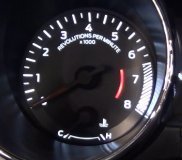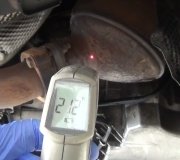My father bought it for me, for my first car three months ago.
Pretty much it ran fine at first, he said the power steering was just empty.
Power steering has a major leak, never caused me problems though since I never added fluid, it ran fine without except for the turning the wheel being very hard when stopped.
A month and a half later, I'm driving up HW-50, my car just loses power, slowly lose speed, so I pull over.
Sat there for five hours, checked all the fuses, everything.
I had a few out, but nothing important.
Turns out, it was the timing belt.
I guess what made the steering so hard, was affected by the timing belt.
It was somehow really jammed and it tore the teeth off and everything.
Got it replaced.
My mechanic said the Tranny slips in first gear, I have a bad oil leak, and I have a bad power steering fluid leak as well.
I get down to pick up my car, drive maybe Seven miles down the road, BAM!
Loses power, and I had to back down a hill, on a mountain with a huge blindspot into oncoming traffic, to get to a safe spot.
We thought maybe the tensioner wasn't right and the timing slipped,
wasn't the problem.
We spent all day checking things, thought it was the distributor, since the power wasn't going to it.
We checked a fuse,
I don't know what it's for, I'm assuming the distributor, what happened was, the guy I had bought it from, he pretty much made a makeshift fuse.
With a 30a fuse, one of the small skinny ones, with two cords and the ends to slide onto where the fuse would actually go onto.
That was the problem, to get to the auto shop, we the wires, and connected them to create a nonstop current to make up for the fuse or something.
It worked, ran fine.
We get to the auto parts store, turn the key off, thinking it would be fine.
We go in, see if we can find a right fuse,
It was the very right fuse that is attached to the positive side of the battery.
I do not know what it is for, but we bought a 50amp to be safe, even though we thought it was a 30a.
We started it, it instantly blew.
We then put the connected cords back together and connected it, tried starting it.
Didn't start anymore, and it would get really hot.
We're thinking maybe as we blew that fuse, we possibly blew something else.
Does anyone know what fuse that is, and where those wires lead to?
Also does anyone know why it may have done that?
Thank you for reading all this and taking the time to help!
Thursday, November 1st, 2012 AT 6:47 AM


